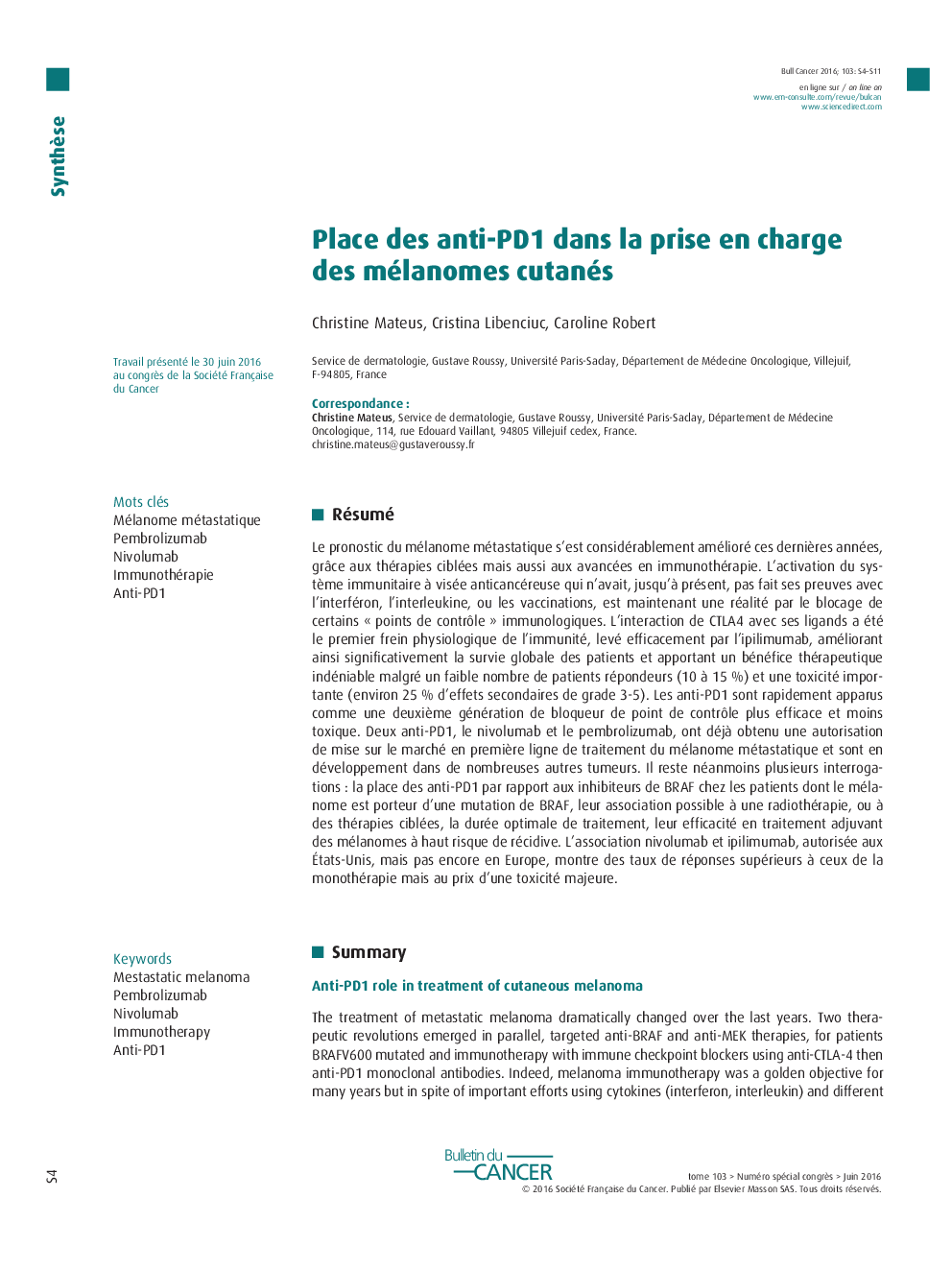| Article ID | Journal | Published Year | Pages | File Type |
|---|---|---|---|---|
| 3978292 | Bulletin du Cancer | 2016 | 8 Pages |
Abstract
The treatment of metastatic melanoma dramatically changed over the last years. Two therapeutic revolutions emerged in parallel, targeted anti-BRAF and anti-MEK therapies, for patients BRAFV600 mutated and immunotherapy with immune checkpoint blockers using anti-CTLA-4 then anti-PD1 monoclonal antibodies. Indeed, melanoma immunotherapy was a golden objective for many years but in spite of important efforts using cytokines (interferon, interleukin) and different vaccine approaches no objective improvement of patients 'prognosis was obtained. Ipilimumab, authorized in 2011, was the first drug which showed a benefit of overall survival in patients with metastatic melanoma in spite a low response rate (10-15) and the occurrence of about 25% of serious toxicity. Anti-PD1 appear as a new generation of immune checkpoint blockade with response rates between 30 to 40% of the patients, a proven overall survival benefit as compared with chemotherapy or ipilimumab and less toxicity than ipilimumab. Two molecules, pembrolizumab and nivolumab were recently approved in monotherapy, for metastatic melanoma. Several questions remain unresolved: the respective indications of anti-PD1 and targeted therapies in first line therapy in patients with BRAF mutant melanoma, the benefit of combining immunotherapy with radiotherapy or with targeted therapies, the optimal treatment duration, and the benefit of the anti-PD1 in the adjuvant setting. The combination of ipilimumab and nivolumab, recently approved by the FDA but not yet in Europ, shows an improvement of the objective response rates (50-57%) and progression free survival compared with nivolumab but is associated with an higer incidence of serious adverse events (more than 50%).
Related Topics
Health Sciences
Medicine and Dentistry
Oncology
Authors
Christine Mateus, Cristina Libenciuc, Caroline Robert,
